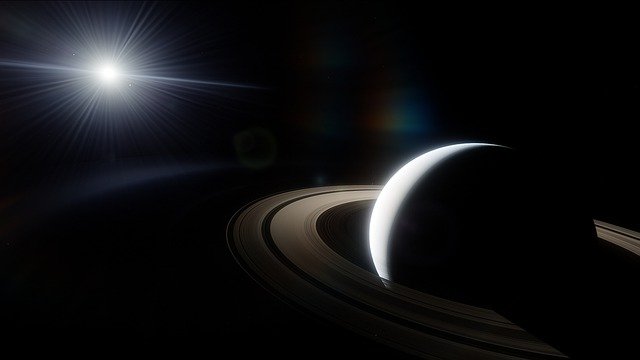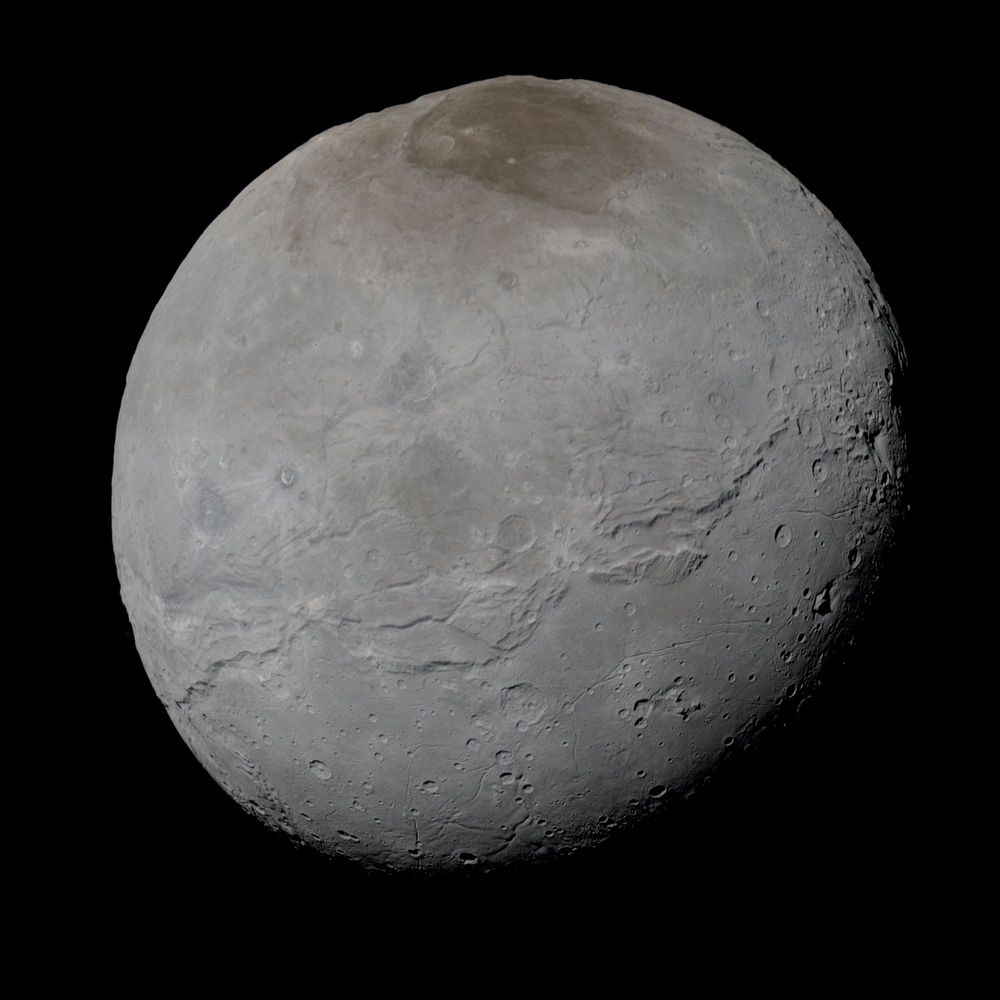*This post may contain affiliate links. This means we may make a commission if you purchase an item using one of our links*
The main differences between Saturn and Charon is that Saturn is a gas giant that is the 5th farthest planet from the Sun and is the second largest planet with a diameter of 116,460km whilst Charon is a natural satellite that orbits Pluto which is the 9th farthest planet and has a diameter of 1,212km.
There are numerous other differences between Saturn and Charon so, continue reading for a more detailed look at each of these celestial entities along with their similarities below.
What Is The Planet Saturn?
Table of Contents

Saturn is the second largest planet in our solar system that has 7 rings surrounding its gaseous exterior. It’s also the 6th farthest planet from the Sun.
As Saturn falls under the gas giant moniker, the planet is mostly made up of gases. However, Saturn’s composition is a little different from Jupiter’s where its atmosphere is a mixture of hydrogen and ices containing elements of Ammonia.
It’s core on the other hand is comprised of a dense core of nickel and iron, which is then surrounded by rocks compressed so strongly that it allows the planets core to reach scorching hot temperatures of 11,700+ degrees Celsius.
On the other hand, It’s gaseous atmosphere is far cooler. The exterior generally sits in the extreme sub zero range where Saturn’s temperatures averages around -138 degrees Celsius.
This is generally constant throughout the yellow ringed giants day to day. In fact it’s much colder than even the coldest place on Earth, which would be Eastern Antarctic Plateau, Antarctica that hits -94 degrees Celsius, which is more than 40 degrees Celsius warmer.
Being so large (116,460km), Saturn’s gravitational pull is obviously strong. That’s why over it’s 4.5 billion years of existence, beyond its rings, this yellow gas giant has managed to accumulate 82 different moons along with other smaller interstellar debris that now orbit it.
In fact it’s largest moon Titan is literally bigger than one of the 8 planets orbiting the Sun, Mercury.
Saturn also orbits the Sun but, as the 6th farthest planet from it, it does mean a singular orbit will take it 29.4 Earth years to complete. In comparison to its axial orbit which only takes 10.7 hours, this is exponentially longer.
What Is The Moon Charon?

Charon is the largest of Pluto’s moons, first discovered on 22nd June 1978. The surface of this icy world is frozen with nitrogen and methane ice; it may also hold some water ice. While Pluto possesses a reddish hue, Charon is closer to a neutral shade of grey; this suggests the two bodies have different compositions.
Scientists named this moon after the mythical ferryman, Charon, who once carried souls across the Acheron river. This river is one of five legendary rivers that could lie beneath the surface of Pluto.
The formation of Charon remains something of a mystery to scientists. However, this moon may have formed around 4.5 billion years ago when an object traveling at immense speed collided with Pluto. Its average distance from the Sun is approximately 3.6 billion km.
Charon is almost half the size of its planet at 1,212km, where scientists refer to these two bodies as a “double dwarf planet system,” and the chilly temperatures vary from minus 23 to minus 258 degrees Celsius.
Charon takes 153 hours to orbit its planet at an average distance of 19,640km, and it is tidally locked, meaning the same side of the moon always faces Pluto. Pluto also experiences a tidal lock to Charon, so the same two sides always face one another.
Among the fascinating features of this ice moon are the ice volcanoes that could exist on the surface. Observations from the Gemini observatory suggest that Charon could have a form of cryovolcanism known as ice-particle geysers.
The frigid world also has a canyon between seven and nine kilometers deep. (To put that into perspective, Mount Everest has a height of 8.8km).
Content goes here.
Similarities Between Saturn And Charon
There are a few similarities that Saturn and Charon share, which in this case includes the following:
- Both are a spherical shape.
- Both have a hotter core.
- Both are part of the same solar system.
- Neither have tectonic plates.
- Both orbit another object.
Differences Between Saturn And Charon
In regards to the differences between the two, they include the following:
- Charon is smaller with a diameter 1,212km compared to Saturn which is the 2nd largest planet with a diameter of 116,460km.
- Saturn is a gas giant planet whilst Charon is a natural satellite.
- Saturn orbits the Sun in an almost circular pattern whilst Charon orbits Pluto and the Sun ellipticaly.
- A day on Saturn takes 10.7 hours whilst a day on Charon is 153 hours.
- Saturn orbits the Sun in 29.4 years whilst Charon orbits the Sun in 247.78 years.
- Saturn has an axial tilt of 26.7 degrees whilst Charon’s axial tilt is straighter and closer to 0 degrees in comparison.
- Charon’s average temperature is -23 to -253 degrees whilst Saturn’s average is -138 degrees Celsius.
- Charon’s atmosphere is near enough non-existent whilst Saturn is a gas giant composed of hydrogen and helium.
- Charon’s gravity is 0.288 m/s² compared to Saturn’s that is 10.44 m/s².
- Saturn’s mass is 5.683 × 10^26 kg whilst Charon’s mass is 1.58 × 10^21 kg.
- Charon has a density of 1.71 g/cm³ whilst Saturn is the least dense planet with a density of 0.687 g/cm³.
- Saturn has a magnetosphere whilst Charon does not.
- Saturn has 81 moons whilst Charon has 0.
- Saturn has 7 rings surrounding it whilst Charon has 0.
- Charon is tidally locked to Pluto whilst Saturn is not tidally locked to anything.
Summary
Even if Saturn and Charon are a part of the same solar system, rotating around the same Sun and have no tectonic plates to speak of, the two are very different distinct in their entirety.
Whether it be in regards to their size, mass, compositional structure, the number of moons that orbit them and more, Saturn and Charon are literally worlds apart in regards to how they function and their overall purpose within our solar system.

